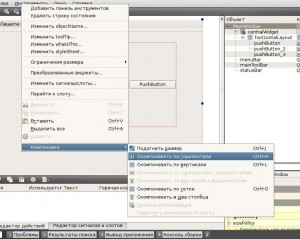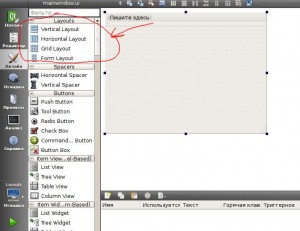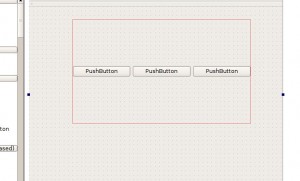Using Qt layout for optimizing the program interface
The Qt framework allows automatic optimization of the program's interface for any monitor resolution or window size change. This can be done using Qt layouts.
When adding components using the regular method (dragging the component in the form designer), it has a fixed size. This can cause undesirable artifacts when resizing the window. However, if you place the component on a Qt layout, the component's size will automatically adjust to the user's window. Qt layout comes in several types, depending on the user's needs and interface aesthetics.
To start using Qt layout, you need to add the required layout in the Form Designer (see image above) and then place the necessary components there.
You can place multiple Qt layouts on the form as needed.
Furthermore, to automatically resize the Qt layouts when the window is resized, you need to compile the form:
 You can nest Qt layouts inside each other without limit. If you need to preserve the size of an individual component, you can place it inside a separate Qt Widget nested within a Qt layout.
You can nest Qt layouts inside each other without limit. If you need to preserve the size of an individual component, you can place it inside a separate Qt Widget nested within a Qt layout.
You can download a ready-made example here: Layouts

